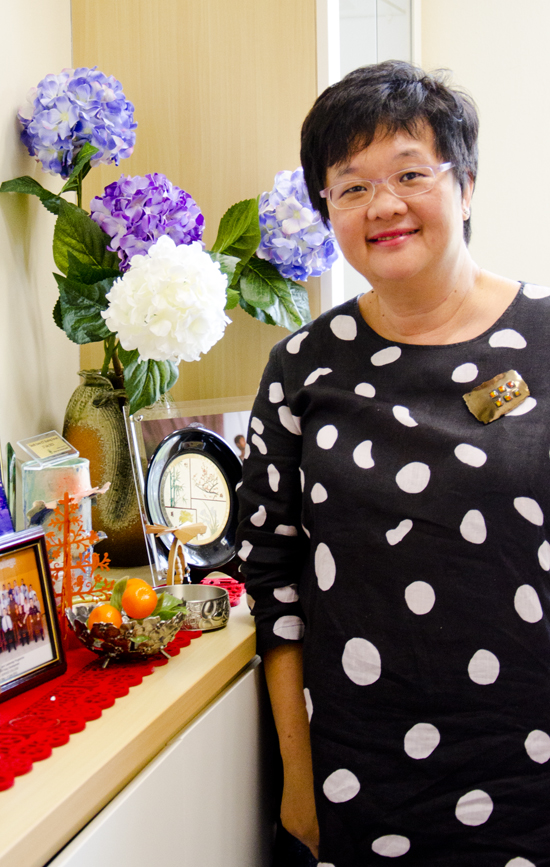Why Singapore’s English Teachers Should Embrace Singlish, Not Fight It
Is it time for Singaporean educators to embrace Singlish as a legitimate learning tool? What the Research […]
Read More
At the Academy of Singapore Teachers, a new STAR is rising. The Singapore Teachers’ Academy for the aRts, or STAR for short, is helping Art and Music teachers to shine. Academy Principal Mrs Rebecca Chew shares her vision of how arts education can help our society grow and mature.

Let me talk more broadly about the role of arts education. When we talk about this, we’re really talking about what touches lives. It’s about our psyche – our identity, our heritage, our rootedness, and sense of place. It has to do with our personhood in a larger societal narrative. And schools are the natural vehicles for developing this.
We often think of Art and Music subjects in silos. But teachers should not think about them simply as subjects but as touching lives. And what’s the place of teachers in this larger narrative in society? They are the critical success factors in the building of tomorrow.
Arts educators build social and cultural capital. What then, is the purpose and meaning of what they conceive and carry out in the classrooms, and how does it fit into the larger landscape?
So it’s a clarion call to teachers to see their professional work and up-skilling themselves. This is the continuing work of STAR. STAR develops the capability of Art and Music teachers by providing structured extended learning opportunities in the specialized domains. We want to help make the arts educators’ thinking visible and help them question their own assumptions, about what they know and the role they play in that larger narrative.
They can tap into STAR’s resources – register for the milestone programmes as arts educators, “like” the very active Facebook page which has updates about events in the arts community, and blog and share about their shared experiences, making teaching and learning both meaningful and connected.
STAR helps teachers plug into the larger community of arts educators where they find greater support and good critical friends for their teaching ideas and approaches. When people organize themselves according to their specialized arts interests, they do it wholeheartedly. It’s transformative renewal from within.
– Rebecca Chew, Singapore Teachers’ Academy for the aRts
You can differentiate the teacher–artist as opposed to the artist–teacher. The artist–teacher is usually the artist, who may share foremost the studio practice experiences through workshops, forums, or performances at events. The teacher–artist, on the other hand, is the educator. What the teacher–artist does is first finding meaning in what is learned as a reflexive approach, and then connecting the applied learning into meaningful approaches for the differentiated classroom.
So there is depth, and there’s also breadth. We’re going beyond community to building a fraternity of arts teachers – that’s something more difficult to achieve.
School leaders must value the Art and Music teachers in their midst, and know that these people are very precious. Their role cannot be underestimated because they bring collaborative practice, critique, core studio habits into the teaching routines.
We’re talking about a total curriculum – Art and Music are respected as equal subject disciplines as part of this total curriculum. It’s about understanding the transformation that arts education can bring about.
School leaders are pivotal because they are the ones who can drive transformation and innovation through the stewardship of these arts educators they have in their staff complement. They can ensure sufficient resourcing, enable enlightened timetabling schedules to support studio time, and deploy staff who have the skills required to enable sustainability of the values taught within the rigour of these subject domains.
The first batch of students from SOTA graduated last year. And from what the parents tell us, they are surprised to see how much their kids have grown and matured suddenly. There is a strength of mind and inner resilience. Children are by nature very curious, but these students are not afraid to ask questions or to probe deeper.
Perhaps these habits came from the way they were taught – through critiquing, spiralling questioning, the many reiterations they have do for each piece of work. Some people call it critical thinking, but I see it as more than that. They develop analytical and lateral thinking, and they are able to take a position for themselves.
As an educator, you see these students you nurture applying their artistic skills to lived reality, linking with the community. We had eight students who went to document 100 Acehnese families’ stories of what the tsunami did to their families. These students returned to make beautiful illustrated books to be sent back to the Aceh primary school, to help the community tell the stories for those kids as a piece of their heritage story.
We need skilled teachers who are enlightened to see purpose and meaning, to see the transformative role that Art and Music can play, and who encourage experimentation, expression and discovery. Through what they do, they contribute a larger voice to that narrative, to our heritage as a Singapore society.